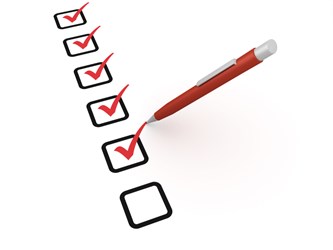Technological Consideration When Transitioning From VAR To MSP: Sales Edition
By Matt Kanaskie, Marco

When planning your transition from VAR to MSP, one of the main factors to consider is the variety of technological shifts that need to occur for the change to be successful. Your sales team is going to be selling an entirely new suite of solutions with a different value proposition and process. They will need the training and sales tools necessary to make a successful transition.
This article will focus on those sales considerations. Part two, coming out mid-March, will take a look at the business considerations you’ll need to make.
Technology For Sales
First things first. Do you have an integrated sales management software or a CRM (Customer Relationship Management)? While it’s true that most sales management solutions also offer CRM functionalities and vice versa, a CRM solution can be a more robust option that could work for your entire organization by streamlining everything into one central location from the start.
A CRM is a more comprehensive option that could potentially eliminate your need for multiple software platforms across different departments housing various data on the same customer. This software can be used not only by sales but by customer service, technical support, project management, and marketing as well.
Proposal Software is designed to help your sales team to automate proposals and presentations and the ability to track multiple versions while keeping the templates and formats consistent. Proposal software is considered a sales efficiency tool, helping teams maximize every cross-sell and upsell opportunity by optimizing and increasing the visibility into the sales cycle. This software can typically be integrated with your CRM or sales management software.
Features typically seen in proposal software solutions include:
- Control access to proposals based on defined user roles.
- Provides multi-tier approval.
- Facilitates storage and retrieval of proposals.
- Control over data validity and pricing.
- Improve communication and collaboration among users.
- Increased content and brand compliance.
- Track the time spent by various contributors, enabling management to calculate ROI.
- Provides the ability to electronically sign contracts, tax documents, and legal materials that are included in the proposal.
In addition to CRMs and proposal software, a successful sales team also will need to have tools such as ROI calculators and value generators ready for them to use. Other investments you’ll want to keep in mind include the cost to train current sales staff on new technologies and processes as well as the costs for continuing their education. This includes a learning and development process along with adding an LMS (Learning Management System). And, don’t forget the administrative costs, such as new business cards, collateral, branding, reference materials, and that list will continue to grow as your sales team grows.
Transitioning your sales team from a VAR mindset to an MSP mindsight can be costly—and doesn’t happen overnight. In addition to the time it will take you to ramp up a sales funnel and customer base, as well as the above-mentioned technology investments, you also need to consider sales compensation plans, which are quite different for MSPs than VARs. You may end up having to give up a lot on the front-end to make a successful shift to a new comp plan. Additionally, utilize incentives and promotions to drive corporate initiatives.
The biggest challenge you may face is the change in mindset — from selling a component of IT Infrastructure to selling all things IT related. The sales force will need to look at the whole IT spectrum now; help them look at all the things their customers are buying and find a way for them to get those things from you. No longer will your team be selling on price or features; you need to completely change the message to a sale based on value and quality. It won’t happen overnight, but when you build the steps and the systems combined with the support they need, your sales team will be successful.
About The Author
Matt Kanaskie is the Director of IT Sales at Marco, a technology services company founded in 1973. Matt has been consulting, designing and implementing complex IT and telecommunication solutions for business clients for over a decade. Matt’s experience has traversed individual sales contribution, sales engineering, subject matter expert, product management and sales leadership within IT and telecommunications industry. He joined Marco in 2015 to assist in development and execution of multiple cloud communications service offerings. Matt is currently the Sales Leader for Marco’s recurring solutions which include Managed Services, Cloud Services and Carrier Services.
